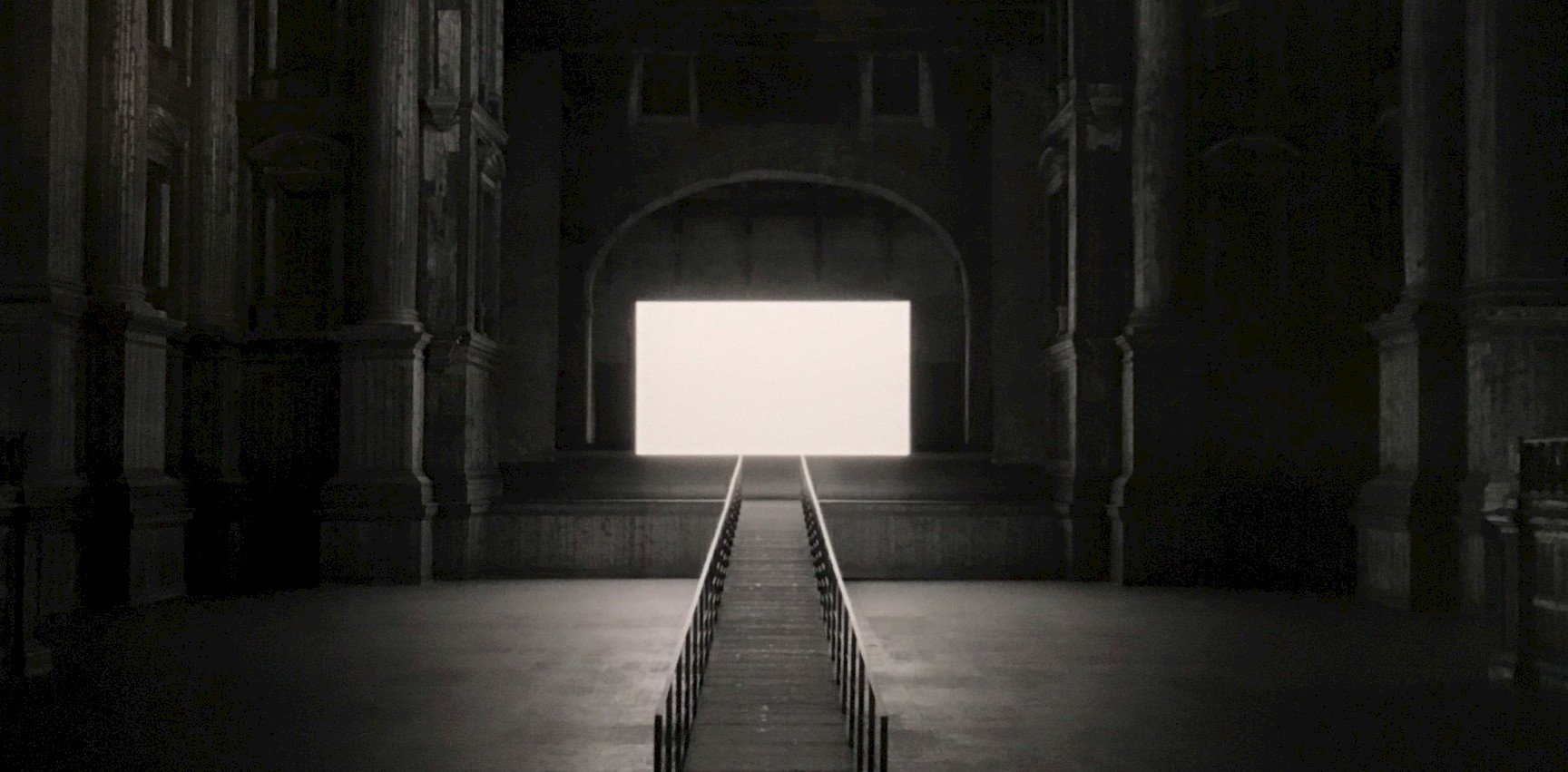Hiroshi Sugimoto
Snow White

If I already have a vision, my work is almost done. The rest is a technical problem. - Hiroshi Sugimoto
The black and white photographs of Hiroshi Sugimoto are enigmatic, alluring and highly captivating. This series of photographs, from Sugimoto's Theatres series, is currently on show at the Marian Goodman gallery in Soho until December 22nd 2017. They show a mastery of light, form and concept: each photograph depicts a theatre, devoid of people. The only light source is a white rectangle that bathes all surfaces in its light - created by an ultra-long exposure (the actual time the shutter is left open is dictated by the film that has just been screened) to leave a gleaming rectangle of light created by the accumulation of every frame of the film. Time itself has been flattened, the whole story compressed.
The rectangle illuminates all the chairs, balconies, ceilings, floors and details we can see - ghostly in their silent witness of the story. The position of the camera is at eye level to place the viewer right into the image. The show is over, we are left lurking at the back of the theatre, unsure of whether to enter further or leave. As you walk around the exhibition you can see that the brightness of each rectangle of light is different: some dimmer, some brighter - the sum total of light emitted for each film is unique. But it’s presented as a process of erasure. The theatres have been abandoned for decades, slowly losing their identity. The crowds that once filled them are long gone. The films themselves are a mystery, nothing left of any tangible value.
Even in their hung environment, the idea of screen and spillover into the surrounding environment continue - they have been hung in such away that the reflections on the floor of the artworks resembles the ghost of a distant screen, an illuminated trapezoid pooling in front of each artwork, adding another dimension to the already multi-layered works. the frames are angled 45 degrees to collect light and contain lead - a soft and dangerous material that we rarely see these days but which we used to have an inyimate relationship with - maybe another reference to the physicality of a past that was less removed from the physical world than we are today. Genius.
The absence of people in the photographs also relates to the current phenomenon of consuming content on our own - families don’t huddle round the TV as much any more. We watch Stranger Things, Twin Peaks, Game of Thrones, Blue Planet II in our own time on whichever device is most convenient when the time presents itself - the smooth lines of smartphones rather than the ornate surroundings and scale of a grand theatre frame that content now. Yes we go to the cinema but we watch Netflix and Youtube and peruse social media more than we go out to see a show. Group spectacle has been atomised. One of the fastest growing mass appeal spectacles are esports - computer games tournaments - 14.7m watching the 2016 League of Legends World Championship, but not in the same physical space - mostly watching online. In fact, unless you knew it was happening it passed largely unnoticed. Unlike stadiums where you can hear the roar of the crowd for miles around. The idea of spectacle and physicality is something we are slowly re-embracing but it may be too late for some of these magnificent structures.
...
The Abandoned Theatres series depict former grand halls of music and film now dilapidated, left to decay for decades. Reflecting the various economic downturns and changes in patterns and social entertainment, these images evoke a sense of Piranesi’s depictions of classical ruins, or in this case, are ruins made modern. Sugimoto began to photograph the most recent locations - a number of Italian opera Houses - in 2014, which includes images of two of the earliest Renaissance theatres in Italy: the Palladio-designed Teatro Olimpico, Vincenzo and the Teatro all’Antica, Sabbioneta. These classical Italian buildings are the architectural ancestors and inspiration for the style of the majority of the American Theaters which the artist originally began photographing.
The Abandoned Theatres series began as an experiment in which Sugimoto used an ultra-long exposure (dictated by the duration of each film) to capture the thousands of moving images on a single frame of film. The ‘afterimage’ of this long exposure is one of a gleaming, pure white screen, which remains in our visual memory beyond the physical experience of the actual film screening.
Snow White is being shown at the Marian Goodman Gallery (5-8 Lower John Street, London. W1F 9DY) simultaneously with another show by Sugimoto in Paris that showcases pieces from his Seascapes series, both were open until Friday 22nd December 2017.
Hiroshi Sugimoto (b. 1948, Tokyo, Japan) divides his time between New York and Tokyo. He opened his Odawara Art Foundation in Kanagawa, Japan in Autumn 2017.